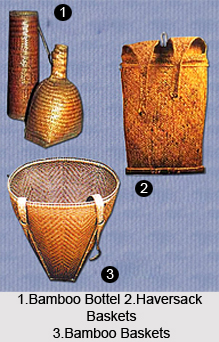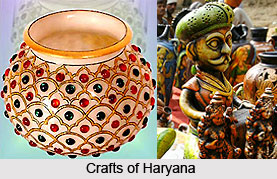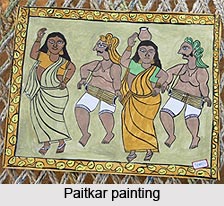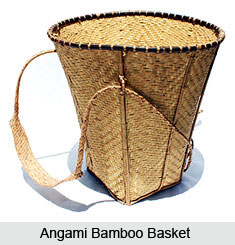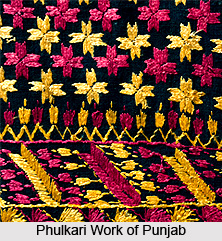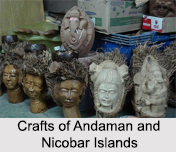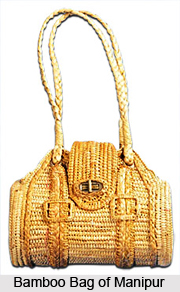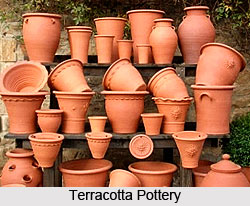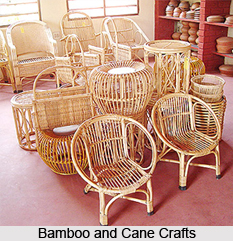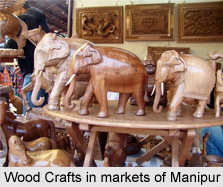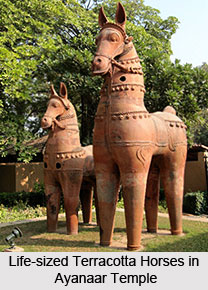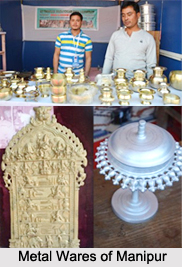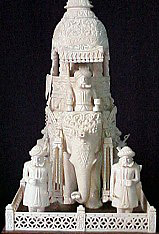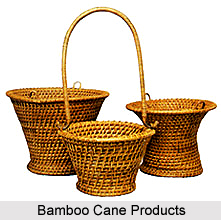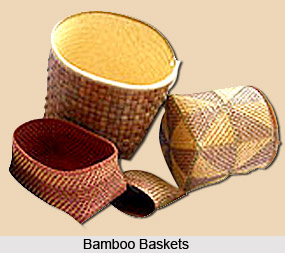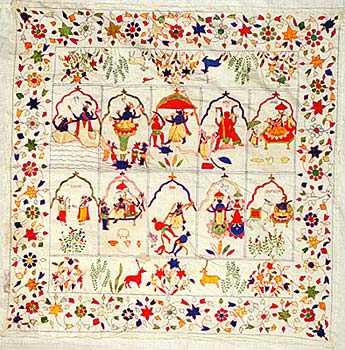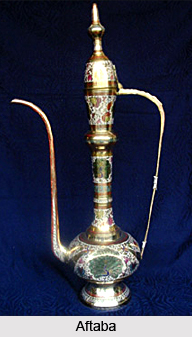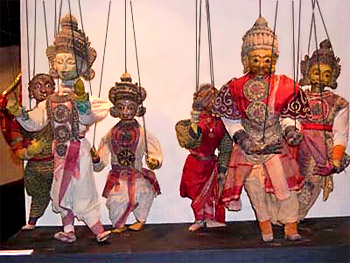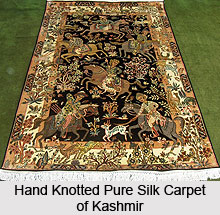 The hand knotted silk and woolen carpets of Kashmir take pride in their uniqueness. The carpet producing centers in India is mostly present in Kashmir, who are the traditional hand knotted silk carpet weavers. The origins of the traditional silk carpets of Kashmir can be traced to the Mughal period.
The hand knotted silk and woolen carpets of Kashmir take pride in their uniqueness. The carpet producing centers in India is mostly present in Kashmir, who are the traditional hand knotted silk carpet weavers. The origins of the traditional silk carpets of Kashmir can be traced to the Mughal period.
Hand knotted pure silk carpets of Kashmir are world famous for their softness and craftsmanship. These carpets are very expensive. The process of creating a hand knotted silk carpet is lengthy and requires a lot of preparation by the craftsman before weaving the carpet. The yarn used in making these carpets determines the type of the carpet to be created. Woolen carpets of Kashmir are always created on a cotton base with woolen yarn. Silk yarn is sometimes used in woolen carpets as highlights on certain designs and motifs.
A carpet with a pure silk pile may be referred to as an 80% silk carpet. Carpet weaving in Kashmir was not originally indigenous but is thought to have come in by way of Persia. Atypical Kashmiri design is the tree of life. Persian design not withstanding, any carpet woven in Kashmir is referred to as Kashmiri. The color-way of Carpet, and its details differentiate it from any other carpet. And while on the subject of colors, it should be kept in mind that although the colors of Kashmiri carpets are more subtle and muted than elsewhere in the country, only chemical dyes
Hand silk carpets of Kashmir are the specialties. They are those carpets, which are created on a silk pile and the silk carpets are also created on a cotton or woolen pile. Generally silk carpets are made up of 80% of silk yarn and 20% of cotton yarn, having more than 400 knots per square inch. 100% pure silk carpets have very high knots per inch. The knots per square inch of such carpet can vary between 400-1600 knots per square inch. The knotting of the carpet is the most important aspect, determining its durability and value, in addition to its design. Basically, the more knots per square inch, the greater its value and durability. The carpet craftsmen in Kashmir follow the traditional Persian or Islamic designs of Kirman, Kashan, and Esfahan, Herat and so on to weave their innovative carpets. Though there is a strong Persian influence in Kashmiri carpets, however one can also see local variations.
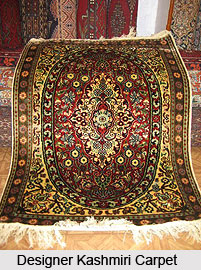 The most recurring motif of carpets of Kashmir, found on silk carpets from Kashmir is the depiction of the tree of life, in all its glory. The natural beauty of Kashmir and its picturesque views has also inspired the carpet weavers and the locale has also become a theme of Kashmiri carpets. Other popular themes of carpets of Kashmir include hunting scenes, bird and animal motifs and significant themes. These carpets are available in a variety of colors and designs. Carpets from Kashmir are subtle in comparison with the carpets woven from other parts of the country. Carpets made in Kashmir are made with fiber dyed with mineral colors, as vegetable dyes are not used at all. Bright colours like red, blue and yellow colour are also used.
The most recurring motif of carpets of Kashmir, found on silk carpets from Kashmir is the depiction of the tree of life, in all its glory. The natural beauty of Kashmir and its picturesque views has also inspired the carpet weavers and the locale has also become a theme of Kashmiri carpets. Other popular themes of carpets of Kashmir include hunting scenes, bird and animal motifs and significant themes. These carpets are available in a variety of colors and designs. Carpets from Kashmir are subtle in comparison with the carpets woven from other parts of the country. Carpets made in Kashmir are made with fiber dyed with mineral colors, as vegetable dyes are not used at all. Bright colours like red, blue and yellow colour are also used.
Kashmir has been the center of arts and crafts since many centuries. The Kashmir carpets are celebrated worldwide. The mesmerizing beauty of the carpets reflects the beauty of the place itself. Mughals mastered this art in India and the carpet weaving initially was very much influenced by the Persian designs, styles and patterns. However in the late seventeenth century, Indian style began to replace the Persian style in regard to the carpets motifs. In the modern period Kashmir carpets especially those manufactured from silk are the most admired as floor covering items in the world. The colors of the Kashmir carpet distinguish it from the other carpets. The carpet colors are more restrained and muted. Vegetable dyes are mainly used for coloring the yarn and all shades of red, green, yellow, blue are used principally.
The yarns used in carpets of Kashmir are either silk or wool or sometimes a combination of the two. The pile used is usually wool. While manufacturing woolen carpets, cotton is used as base, silk carpets may have a cotton or silk base. As compared to woolen carpets silk carpets are expensive. Sometimes silk is used in the woolen carpets for extra polish. Woolen carpets of Kashmir are soft and make thinner folds; they are more flexible and have the shine of the silk. The knots per square inches in these carpets are high. Silk Kashmir carpets have a diverse sheen with velvety soft touch.
The knots in Kashmiri carpets determine the durability and the strength of the Kashmir carpet. Kashmiri carpets are often woven with either double knots or with single knot. As compared to double-knotted carpets, single knotted carpets are fluffier. The double-knotted carpet pile is less resistant to touch and pressure. Carpets of Kashmir are marvelous pieces of art and lend beauty to the whole environment if installed in homes. Carpets are beautified by elaborate patterns and marvelous designs. The most popular designs of these carpets are the tree of life. Designs of these carpets are mainly floral or zoological though geometrical motifs. The designs of these carpets are named after Iranian cities like Kashan, Kirman, Ardabil, Meshad, Qum, Faraghan, Hamadan and so on. The carpet weaving technique used in Kashmir is called Talim. It is a blueprint of carpet weaving. It is paper that is covered with interminable rows of twists, curves and hieroglyphs. After learning the design depicted on the Talim for months, the actual manufacturing starts.
While buying carpets of Kashmir, one should keep in mind certain things. As these carpets are very expensive and is one time investment, they must keep following things in mind before purchasing Kashmir carpets. The material of the carpet should be checked properly and a close eye should be given on the carpet that is being purchased and enquire the knotting pattern just seeing the carpet from the reverse side. Each motif or element of design should have clear, crisp outlines and the edges should also be smooth. The carpets of Kashmir are famous all across the world and are largely exported to other foreign countries.
